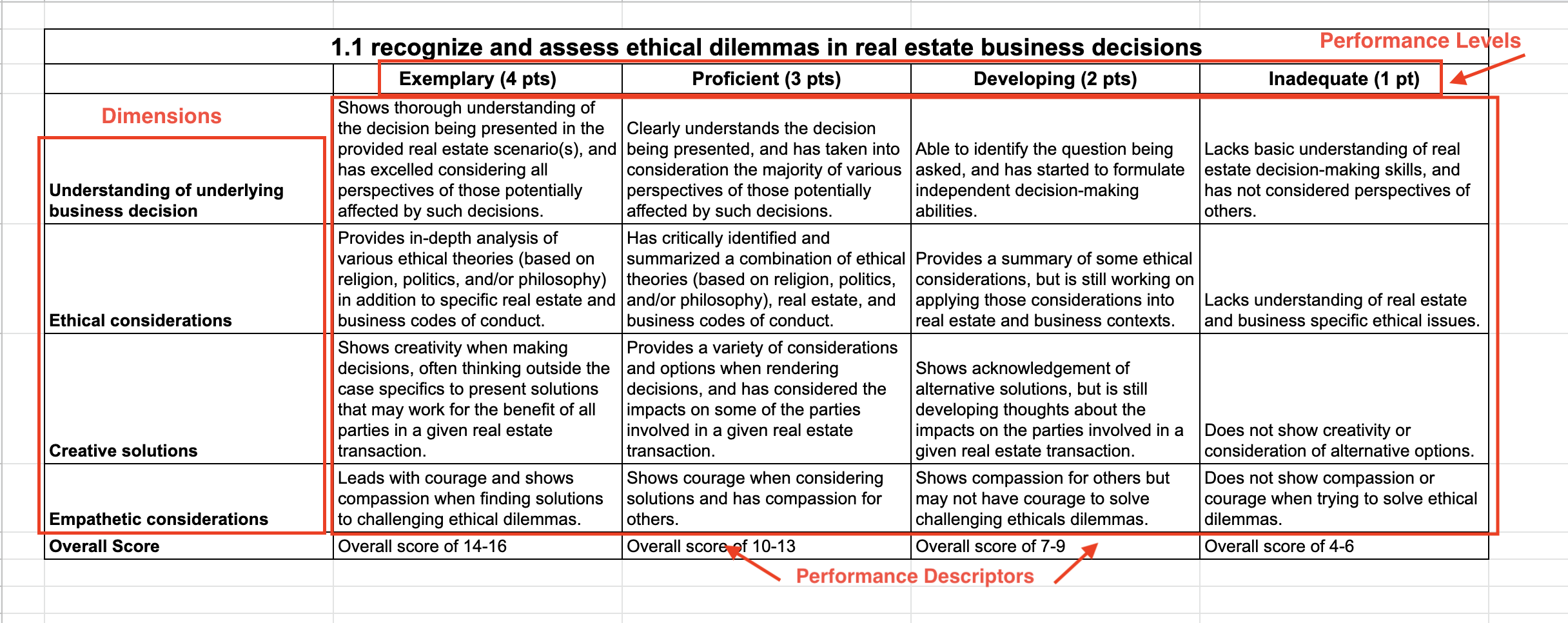Rubric Guidelines
At Graziadio, rubrics for each program learning outcomes are created by program chairs, faculty, and the assessment team. Rubrics are designed to measure student performance and are scored by the instructor and submitted in LiveText. An assignment in LiveText is simply a rubric for the outcome to be assessed. There are a set of assignments created for each program and these assignments are recycled throughout the trimesters for different courses.
Rubrics work like any other rubric in that they try to best capture how a student performed in multiple components of an assignment. For example, if a student is being assessed in oral communication and did an oral presentation, the student will be scored in different areas of the assignment, like body language, flow, and knowledge of the topic.
Criteria
- Criteria are listed along the left hand side of the rubric
- One criterion = one idea
- Do not try to fit multiple components of an assignment into one criterion
- Criteria should match the required criteria outlined in the assignment itself
- When reviewed by others, there should not be any missing criteria
Performance Levels
- Performance levels are listed along the top of the rubric
- Rubrics should be four levels in order to have more meaningful and precise assessment results
- Graziadio's rubric performance levels start from the left at highest level to the right at the lowest level and are labeled Exemplary, Proficient, Developing, and Inadequate
Performance Descriptors
- Performance descriptors fill in the inner part of the rubric that outlines what each performance level describes for a particular criterion
- Avoid overly broad descriptions; try to hone in on the idea itself to make the data more measurable
- All performance level descriptors must accurately capture and discuss all aspects of the learning outcome, whether at a low performance level or high performance level
- Use descriptive but student-friendly language so that a criterion is easy to assess and that students understand the expectations of the assignment clearly
- Make clear distinctions between performance levels and ensure that the levels flow
from each other, leaving no gaps in between each level

The guidelines above were developed from Dr. Lance Tomei's Ten Tips for Designing Effective Rubrics webinar.